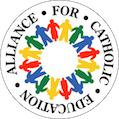What is 3-Sector Reform - and Why Should You Care?
We are all to some degree familiar with the phenomenon whereby a word or term is used so often that it ceases to have real meaning. If not, you need only listen to a sports talk show immediately following a championship (regardless of the sport) and pay attention to the number of times a particular team or athlete from the game is referred to as “the greatest of all time” to get a sense for this dynamic.
In the context of K-12 education, the term “reform” often feels as if it is approaching such a point. On some level, this makes sense. In the abstract, reform is something that is quite easy to be for and very difficult to be against. The challenge, of course, is to move past abstraction and get a sense for the particular contours of the reform we’re discussing.
Over the course of the past few years, a dynamic referred to as “3-sector” reform has emerged in some contexts. In general, the aim of these reform efforts is to create a vibrant educational ecosystem in a given region, through which all three of the traditional education sectors (district public schools, charter schools, and private schools) are strengthened. A spirit of “sector agnosticism” tends to animate such efforts, insofar as they are designed to increase both the quantity and accessibility of high-performing schools serving at-risk children in a target area—regardless of the “sector” of those schools.
In many ways, such efforts are great news for Catholic schools and school children. However, I believe that our success in this enterprise will be largely dependent on our ability to shift our mindset when it comes to re-imagining Catholic education.
Twenty-five years ago, two things happened within a few months of each other that forever changed the landscape of American education. The first was the passage of the Milwaukee Parental Choice Program (MPCP), the nation’s first publicly funded private school choice initiative. The second was the institution of the nation’s first charter program, enacted into law by the Minnesota legislature. In the quarter century that has passed since then, choice has become a hallmark of American schooling, and scores of children enjoy greater access to more and better educational options than ever before.
At the same time, we would be well served to recognize how very different the story has been for the charter sector than it has been for the private school sector. In brief, there are almost ten times as many children enrolled in charter schools (~2.5 million) as there are children enrolled in faith-based schools (~350,000) through publicly funded private school choice legislation. This is interesting for a few reasons, including:
- The two policies (private school choice and charter schools) are essentially the same age.
- At the launch of the two movements, faith-based schools had the ostensible advantage of name recognition, whereas charter schools were unknown.
- Faith-based schools had the additional advantage of owning their school buildings, whereas charter operators had to engage in the difficult work of finding or building school sites.
Why the disparity? There are a variety of reasons, many of which have to do with the sometimes silly politics of education policy. The most important, however, may be the one that is most often overlooked. It has to do with the awesome power of proof of concept.
In general, the charter sector has done a very good job cultivating a critical mass of high-performing schools serving at-risk children. This is not to say that every charter school fits such a description, of course. However, the sector has placed a great deal of emphasis on developing a sufficient number of high-performers such that a casual observer (or a lawmaker) can establish both a correlative and a causal link between the enactment of charter policy and more children getting a better education. That is, the footprint of high performing schools in the charter sector has grown to a level where there is arguable proof that the concept of charter policy does, in fact, “work.”
There is considerably less proof of concept in the faith-based sector. Although faith based-schools in more than twenty states (and Washington DC) are now taking advantage of private school choice policy, there are relatively few high-performing school models that have come into being or expanded exclusively (or even primarily) because of such policy. Networks and schools such Cristo Rey, Hope Lutheran Schools, St. Marcus in Milwaukee, and our own Notre Dame ACE Academies do an absolutely outstanding job in this regard. The problem is that there aren’t enough of them.
I firmly believe that the degree to which we are able to make a compelling case that private school choice (and 3-sector reform more broadly) is integral to transforming K-12 education will be largely dependent on our ability to expand the landscape of absolutely outstanding Catholic schools serving marginalized children. To this end, we should be willing to do whatever it takes to foster such schools:
- We should double down our efforts to recruit and form entrepreneurial leaders and exceptionally talented teachers.
- We should demand academic quality of the highest order and be as transparent as possible with our results.
- We should cultivate vibrant Catholic school culture grounded in the joy of the Gospel.
Put simply, we should take ever more seriously this shared work of ours—which is the business of forming saints. For the sake of the modern reform movement (whatever that means), for the sake of our Catholic schools, and for the sake of our children, let's create more schools worthy of the kids entrusted to our care.




